These small black bees are abundant on the landscape but easy to overlook since many are only a few millimeters long and they lack the bright colors and fuzzy appearance of bumble bees and similar genera. Most genera listed here have few noticeably hairs, and many have shiny bodies.
These important field marks show features that are definitive for a genera or sub-set of genera. Click the images to enlarge.
Important fieldmarks
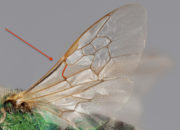
Basal Vein Strongly Bent
Unique to family Halictidae (Lasioglossum, furrow bees, blood bees, short-faced bees, and the green bees)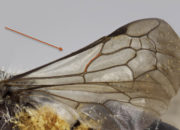
Basal Vein Gently Arched
Bees not in family Halictidae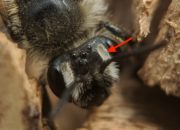
Hairy facial foveae
Only present on female Mining Bees (Andrena)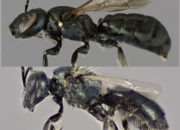
Abdomen Shape
Small carpenter bees (top) have swollen abdomens, compared to Lasioglossum (bottom) and others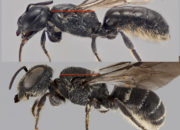
Thorax Length
Scissor Bees (top) have an elongated thorax compared to resin bees (bottom) and others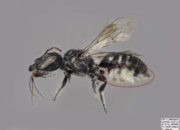
Pollen Carrying Hairs on Abdomen
Unique to family Megachilidae (leafcutters, small mason, resin, scissor bees, etc)
To identify an unknown bee, choose the most appropriate category below to narrow the options.
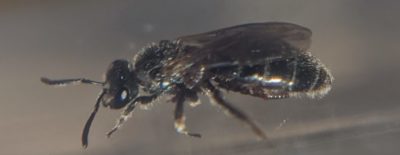
Genus Lasioglossum
Small without distinctive features this genus can be a headache for the arm chair naturalist and bee biologist alike. Most of the species are small and dark with a slight metallic sheen, though one subgenus is large with white hair bands, similar to Furrow Bees.
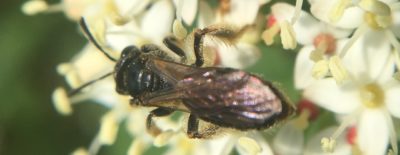
Mining Bees (Andrena)
Abundant, especially in the spring. Most are medium to large and hairy, though a few species, especially those associated with dogwood flowers, are quite small without a lot of hair. When visible, the hairy facial foveae of the females are distinctive.
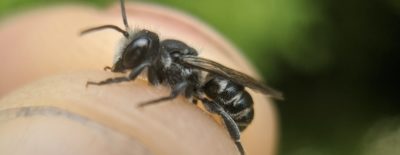
Leafcutter Bees (Megachile)
Mostly larger bees with abundant hair, but a few species, including a relatively common bellflower specialist are smaller and can appear relatively hairless, especially when worn.
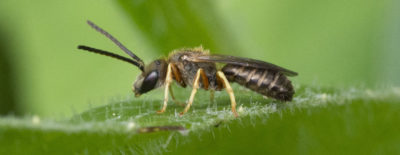
Furrow Bees (Halictus)
The Confusing Furrow Bee (H. confusus) can be quite similar to Lasioglossum species. Other Furrow Bees are generally larger with distinct white hair bands on the abdomen. Photo Credit © Ed Linton
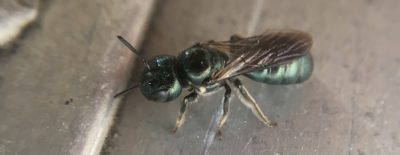
Small Carpenter Bees (Ceratina)
These small, bluish bees are ubiquitous in many habitats throughout the growing season. Can appear dark in some lighting - look for a swollen abdomen.
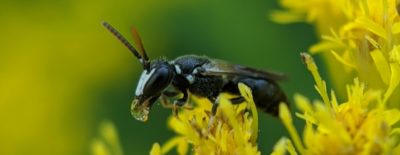
Masked Bees (Hylaeus)
Tiny, nearly hairless bees with distinct yellow or white marks. Late spring through fall.
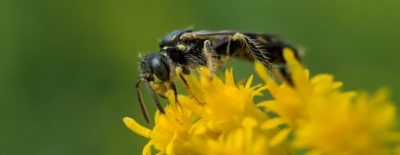
Fairy Bees (Perdita)
Tiny, odd bees. The most common species is closely tied to goldenrod and has yellow marks on the face and abdomen.
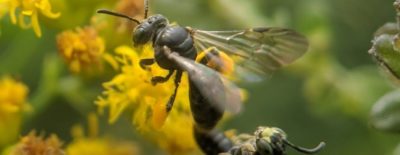
Genus Pseudopanurgus
The two species in Vermont are limited to fall composites, primarily goldenrod. Females are all black, while males have yellow marks on the face and legs.
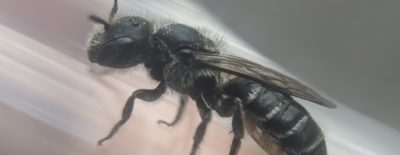
Small Mason Bees (Hoplitis)
A relatively obscure genus with a handful small, dark species. Females carry pollen under their abdomen. Active late spring and early summer.
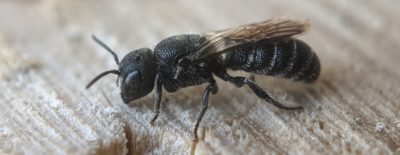
Resin Bees (Heriades)
Small species active summer through fall. Similar to small mason bees (Hoplitis), but with distinctly textured bodies. Females carry pollen under their abdomen and nest in holes in dead wood.
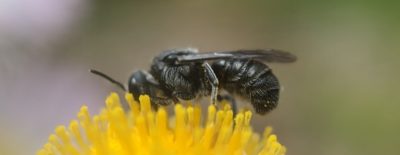
Cuckoo Carder Bees (Stelis)
Rare cleptoparasites of small mason and resin bees. Superficially similar to resin bees (Heriades).
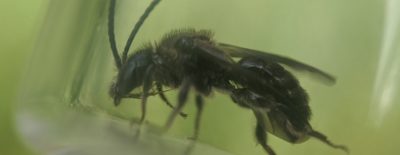
Short-faced Bees (Dufourea)
So far the only species known from Vermont is a specialist on pickerelweed. A second species may occur on beebalm (Monarda). Both are all black with some hairs, males have very long antenna.
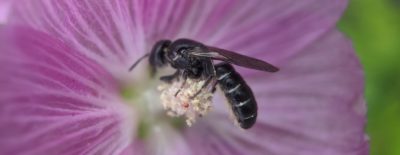
Scissor Bees (Chelostoma)
One introduced species has been found sporadically in relatively urban parts of the state. Two other species may occur with their respective host plants. Elongate thorax distinctive.
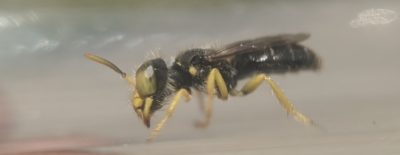
Calliopsis Bees (Calliopsis)
One species found very low to the ground in disturbed habitats. Males have yellow faces, big eyes, and yellow legs. Females are gray with white marks on the face.






